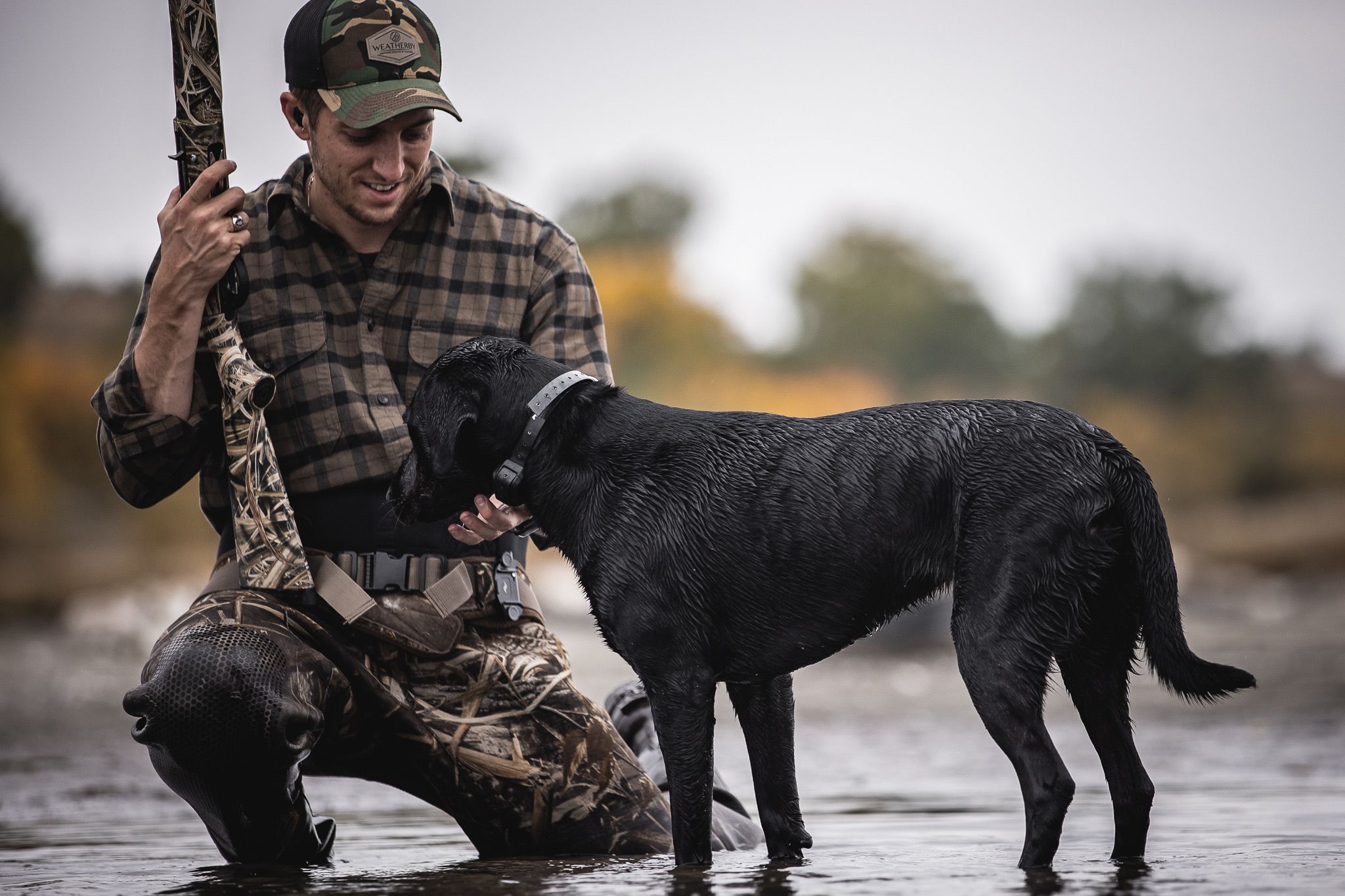Three “MUST DO” Preparations for your retriever!
Posted by Wade Skeen on Aug 16th 2021
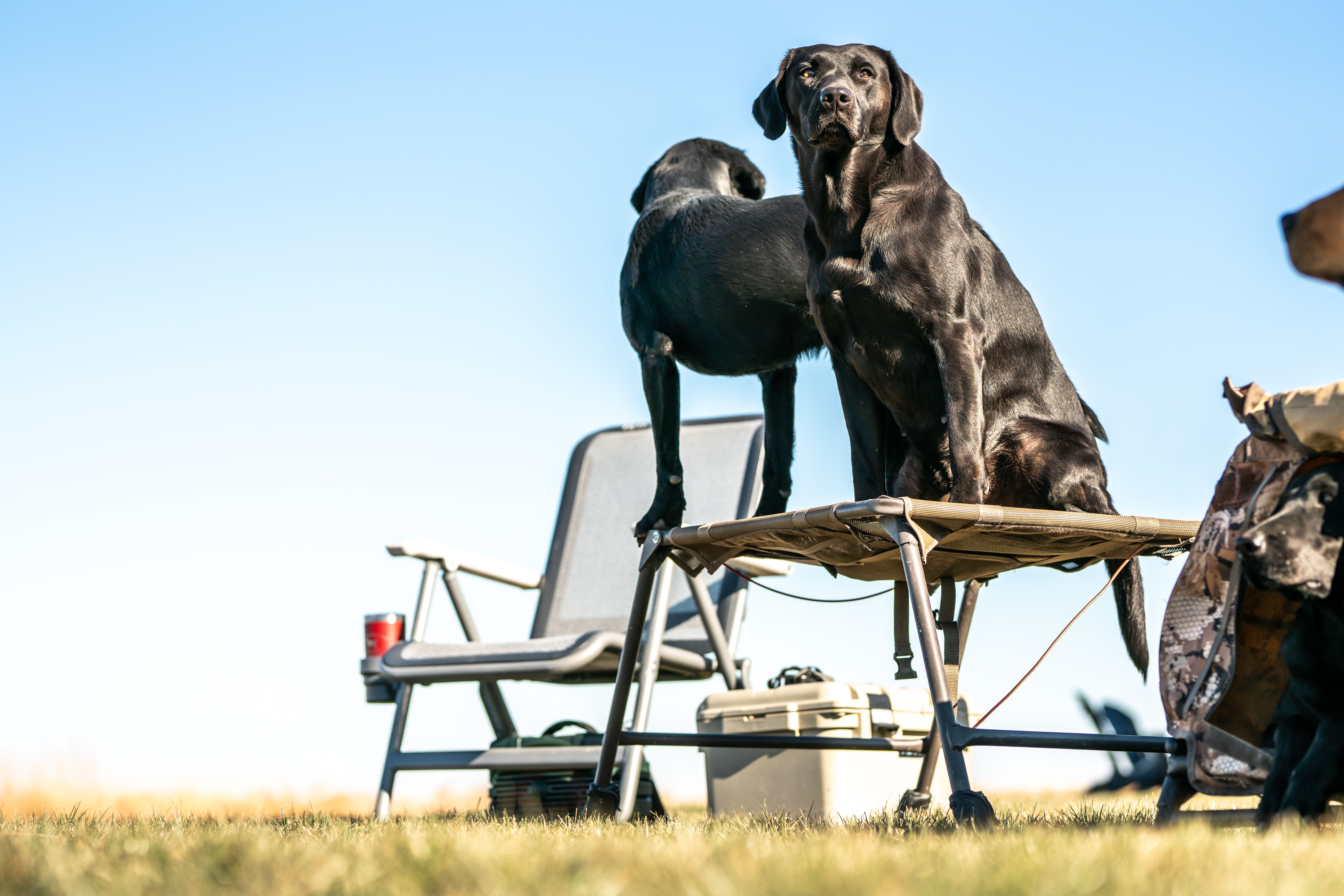
Here we are, almost the end of August. We’ve almost made it through another off-season! College football already started, the NFL is around the corner, and we can shoot doves in a few weeks! Many of us are itching to get our new protégé into the field with us too. We’ve been working with our four-legged best friend since February or March, and we are ready to see their stuff. Before you load them up in the truck for the ride to that first hunt, there are a few checks that must be etched on the list. There can always be more, but these are the 3 that I would never take a dog on that first hunt without.
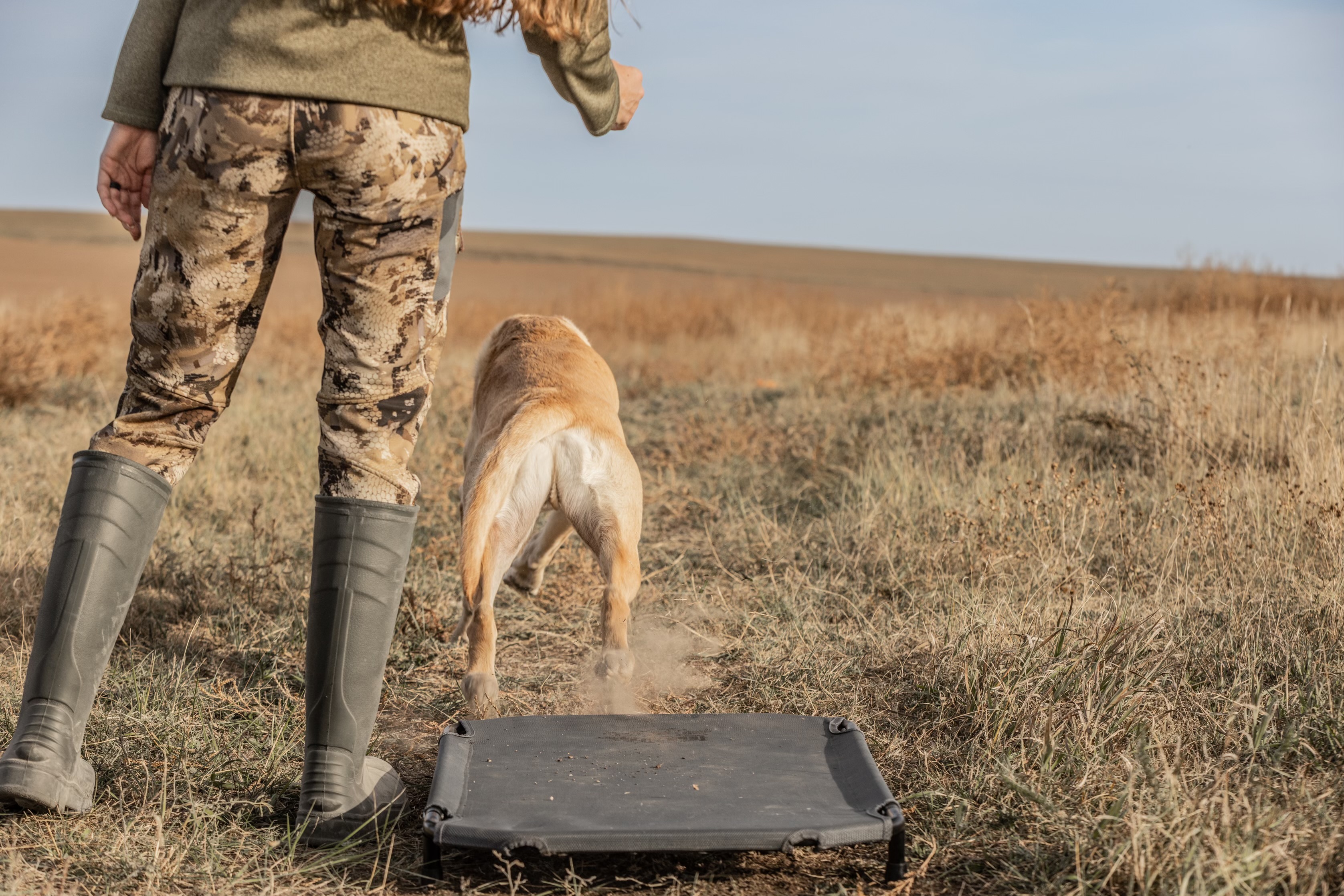
First and foremost, introduction to gunfire. This seems like a no-brainer but every year we see someone out there that takes there pup out for the first time around guns on that early season dove or teal hunt. “Introduction” isn’t even the correct word here. It should be “comfort” around gunfire. Your pup should associate the sound of a 12-gauge going off with his favorite activity, retrieving. If you haven’t gotten Drake or Deke or Remi or whatever your favorite dog’s name is completely comfortable around gunfire, DO NOT pass go, do not collect $200. Begin this process today. It isn’t even that difficult. Get a friend to come out to the field and let’s get started. A lot of people suggest starting with a light caliber like a .22 long rifle. I prefer the method of just adding more distance and using the most common hunting gun, the 12 gauge. This process should start with your buddy well over 100 yards away. Throw an easy mark and have your buddy at 150 yards away fire the gun. Watch your pup and judge his reaction to the gunfire. Was there a cower or a flinch or was he locked in on that bumper? If there was any sign of intimidation, move the gun further away and repeat. If there is still some trepidation, add more distance and a smaller caliber. If there was no sign of fear from pup on that first shot, have your buddy move 25 yards closer and repeat. Slowly, continue this process until you can shoot beside the pup with no signs of fear. If ever it seems the pup gets nervous, have your buddy back away 20 yards and continue from there for a few shots until the pup has built up more confidence.
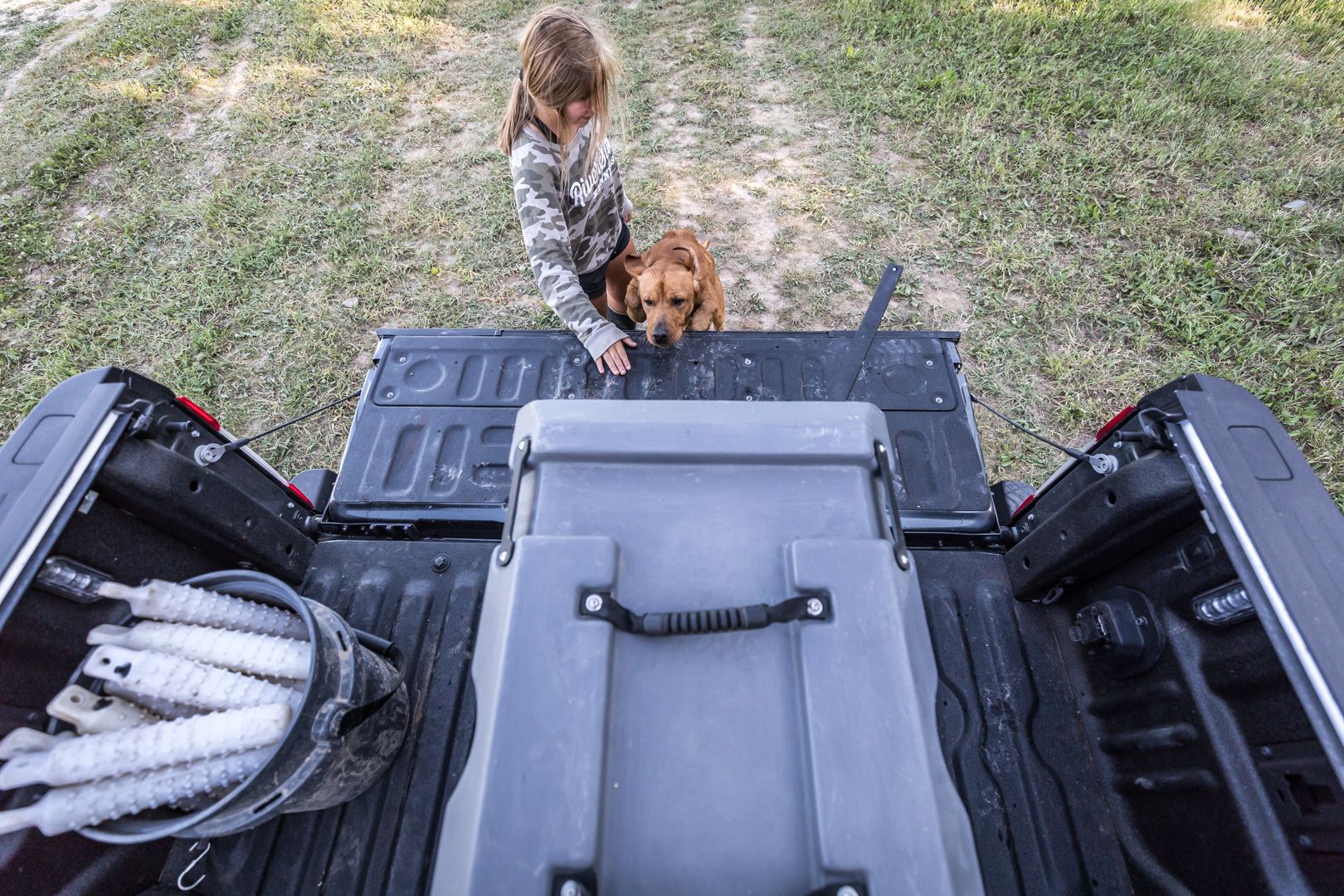
Next, is another pretty simple idea. Birds! Take the time to familiarize your pup with the types of birds it may encounter on a typical hunt. You may not have every single bird it will come across but don’t let the first time it mouths a big goose be in the decoys. If you know that you may shoot some, find a frozen one to work with prior to season. There are tons of dog training groups and pages on social media. If you didn’t save one last season, reach out. Chances are, someone will have some available in your area. This goes for your other birds as well. Familiarize your pup with those birds in the preseason. Doves are of special note. They’re small and easily chewed and eaten. Their feathers come off and end up stuck to dogs’ tongues. Keep water handy and let them experience this prior to that first hunt.
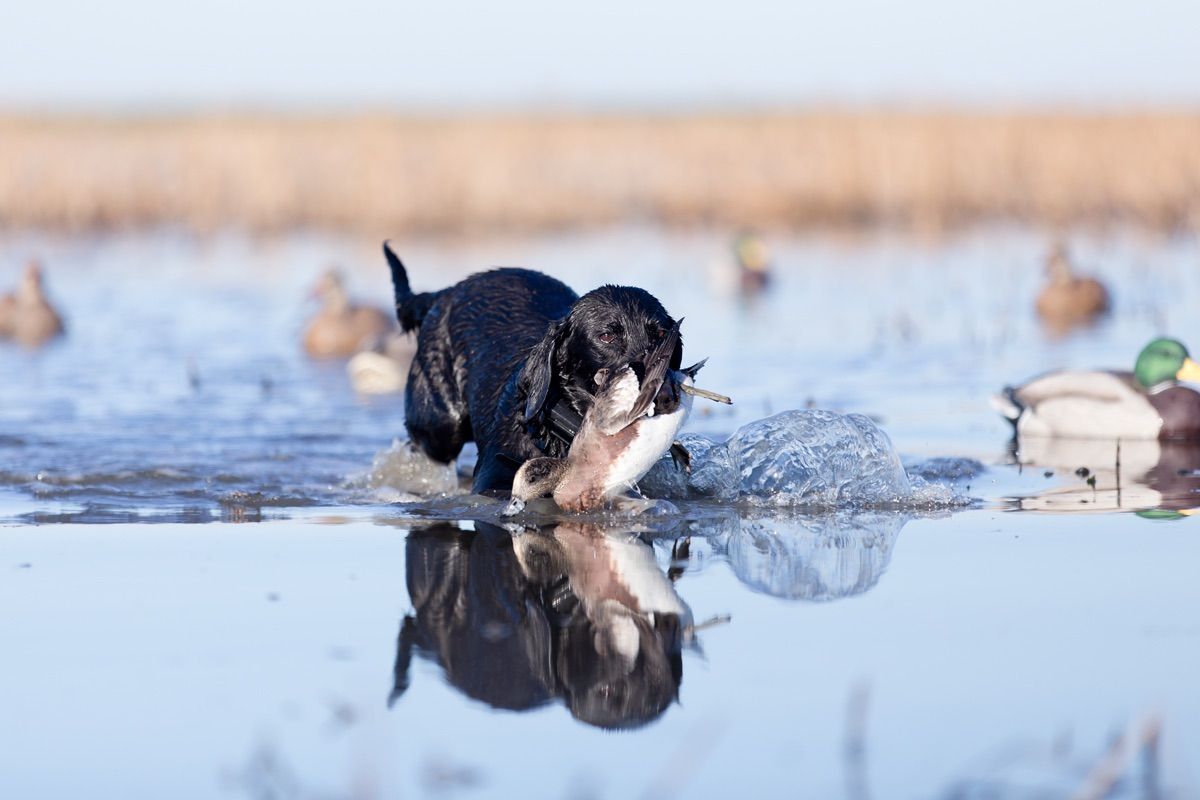
Lastly, are the decoys. I’ve been on several first hunts with dogs just to see them barrel off into the water to grab those teal decoys in the early morning September darkness. Start with decoys in the yard. Heel the pup through them a few times. Let them smell and become comfortable with them. If they try to pick one up, a gentle pull on the lead and a “no” is usually all it takes to get past this. Next, toss a bumper just short of the decoys for a retrieve. Then toss a bumper past the decoys where the pup must run through them to get to the dummy. Last, toss the bumper amongst the fakes to let your pup get used to picking up the right target. Remember, a minor verbal “no” is usually all that is required in this scenario to keep the dog from getting the wrong item. After the yard work has pup completely comfortable around decoys, let’s take it to the water and do the same drill. Add in any sort of decoy you regularly employ through this process. A full-body goose decoy can be intimidating for a young dog if the first time they ever encounter it is while on their first cut-corn field experience.
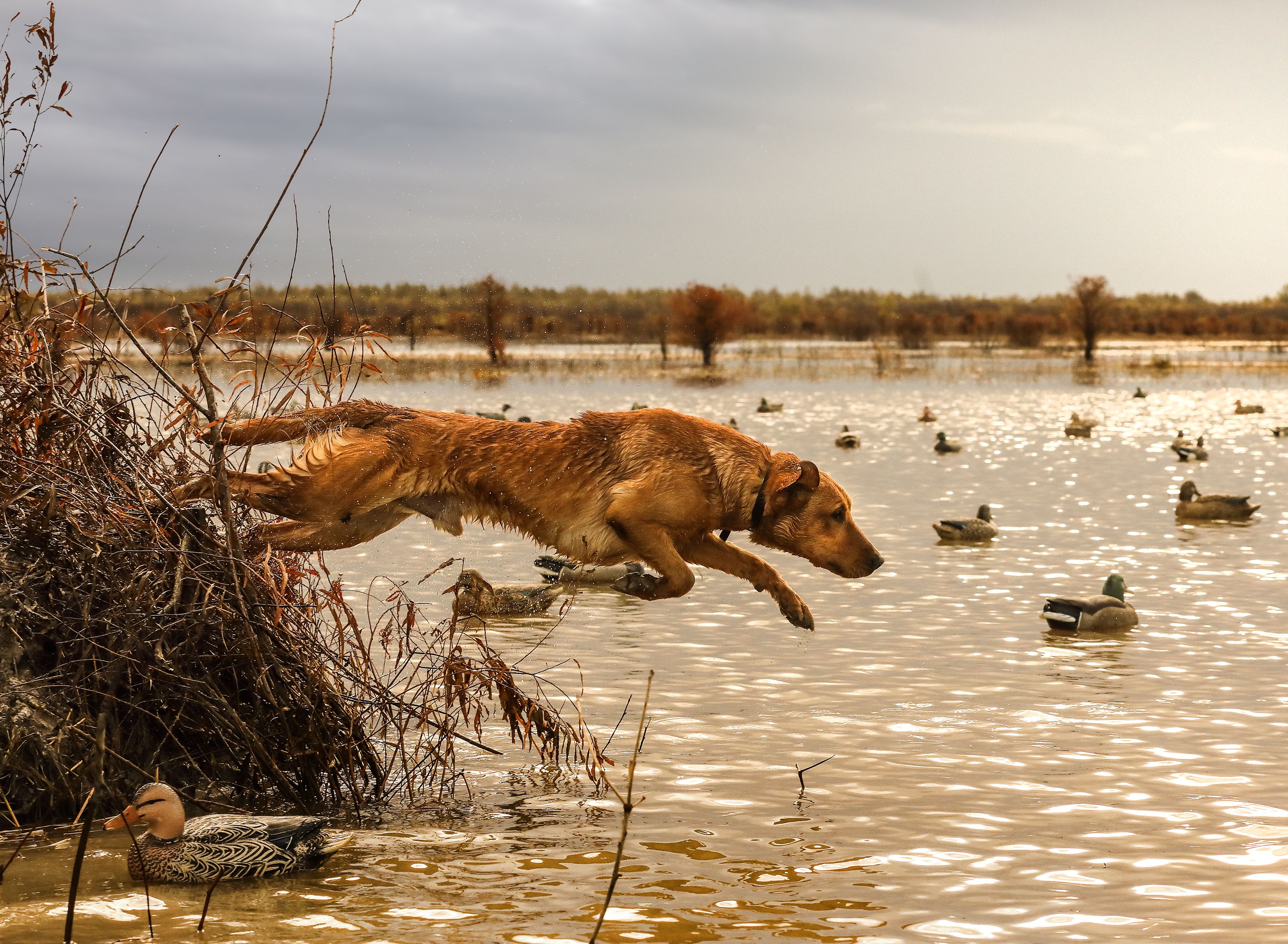
These certainly aren’t all of the skills that have to be drilled before a first hunt, but these are 3 big ones that I won’t take a dog on a hunt without covering first. Remember, this first season is going to be a huge learning curve for your young future retriever. Take it slow, make the hunt about the dog and take lots of pictures. You’ll look back on those “firsts” fondly for years to come.
